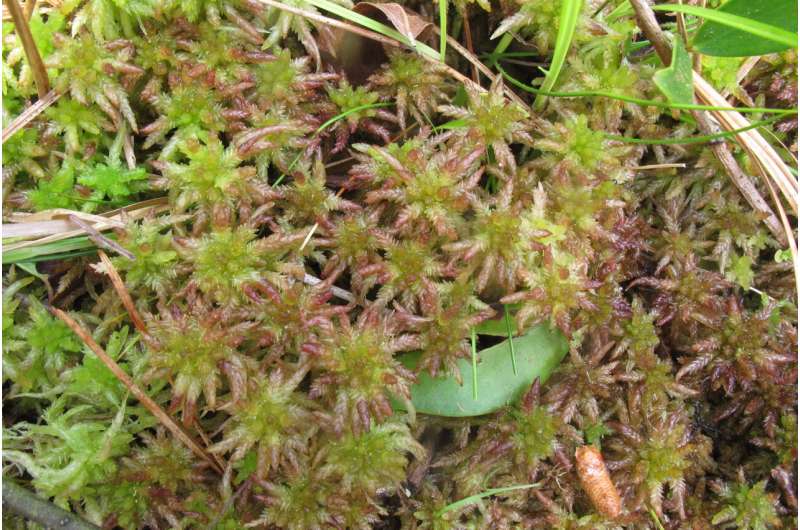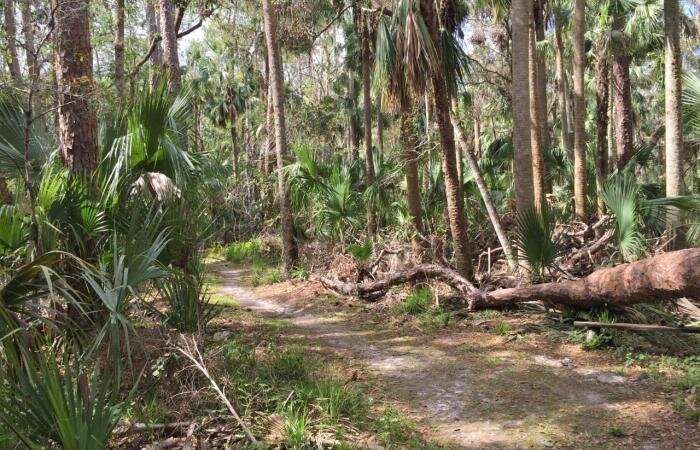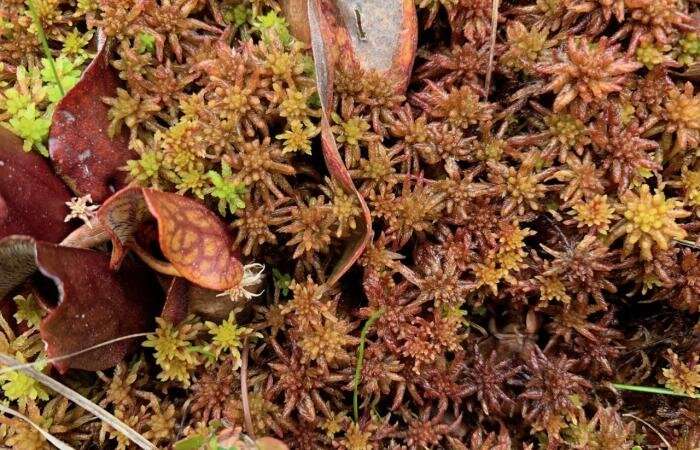Scientists used genome sequencing and computational biology to tease out the genetic profile of a new moss species, Sphagnum magni, typically found in the southeastern United States. Credit: Blanka Aguero, Duke University
A team from Oak Ridge National Laboratory, Duke University and other institutions studying Sphagnum moss have identified two new species in North America, and they are learning how evolution may affect the species' role in carbon storage.
Researchers looking at moss samples from far-flung habitats used genome sequencing and advanced computation to identify differences within the Sphagnum magellanicum complex. So far, they discovered S. magni and S. diabolicum, which differ in geographic distribution and may have evolved in response to climate.
"By understanding their evolution and genetic diversity, we can start to link some of the traits of these organisms to their impact on carbon cycling," said ORNL's Bryan Piatkowski.
Sphagnum is the chief engineer of peatlands in the Northern Hemisphere, where one-third of terrestrial carbon is stored. The moss's response to warmer temperatures can inform predictions about how much carbon will stay locked away in soils or be released to the atmosphere.
-
The hardwood hammock forests of Florida is a typical southern habitat for S. magni. Credit: Jonathan Shaw, Duke University
-
Another newly discovered Sphagnum species, S. diabolicum, is typically found in northerly U.S. habitats. Credit: Jonathan Shaw, Duke University
More information: A. Jonathan Shaw et al, Phylogenomic structure and speciation in an emerging model: the Sphagnum magellanicum complex (Bryophyta), New Phytologist (2022). DOI: 10.1111/nph.18429
Journal information: New Phytologist
Provided by Oak Ridge National Laboratory


























